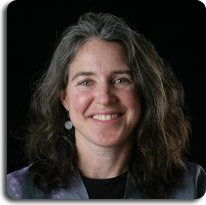 Gillian Caldwell is the former head of 1Sky, a TILE Environment charity. She’s a film maker and an attorney who’s been advocating for worldwide social justice for 30 years. Since she began as the first Campaign Director in September 2007, 1Sky has grown to become the largest collaborative campaign in the United States, building a society-wide movement in support of bold federal action to tackle global warming. The 1Sky campaign now combines the force of more than 600 allied organizations, a full time team of 23 staff and 15 Regional Coordinators, more than 200,000 climate advocates and more than 4,960 volunteer “Climate Precinct Captains” covering every state in the country. Gillian was also the Executive Director of WITNESS, another TILE partner charity, so she’s a leader close to our heart!
Gillian Caldwell is the former head of 1Sky, a TILE Environment charity. She’s a film maker and an attorney who’s been advocating for worldwide social justice for 30 years. Since she began as the first Campaign Director in September 2007, 1Sky has grown to become the largest collaborative campaign in the United States, building a society-wide movement in support of bold federal action to tackle global warming. The 1Sky campaign now combines the force of more than 600 allied organizations, a full time team of 23 staff and 15 Regional Coordinators, more than 200,000 climate advocates and more than 4,960 volunteer “Climate Precinct Captains” covering every state in the country. Gillian was also the Executive Director of WITNESS, another TILE partner charity, so she’s a leader close to our heart!
TILE: How do issues relating to climate change affect young people?
Gillian: Young people will be the most affected by climate change. We are just starting to see the effects of climate change, and if we are unable to pass bold climate policy soon, every young person on the planet will be severely impacted by climate change.
TILE: What’s the most important thing we can do to combat climate change?
Gillian: The most important thing we can do to combat climate change is to get political and take action now. We need to secure strong federal policy (complimented by state policy and local climate initiatives) if we hope to prevent the worst effects of climate change and kickstart the green economy, but the clock is ticking.
TILE: What’s the biggest you challenge you face in your work?
Gillian: We are living in a world where coal and oil interests are deeply entrenched in everything. Convincing our federal policymakers that climate change needs to be our nation’s foremost priority in the face of billion dollar lobbying budgets of fossil fuel industries is not easy work, but it is vital to ensuring a safe climate and a blossoming renewable energy economy. I know we can do it.
TILE: What’s the best advice you would give to your teenage self?
Gillian: The best advice I would give to my teenage self is to dream big and pursue those dreams with all of my energy. Climate change is a big problem, but with enough people dreaming about the clean energy future that is possible and (here’s the important part) putting those dreams into action, we can solve it!
TILE: How do you think young people can play an important role in the changing landscape of philanthropy?
Gillian: Young people continue to find new and creative ways to fund the causes that are most important to them, and at the same time inspire others to get involved in the issues they care about. Young people have a big part to play in changing the landscape of philanthropy to fit the ways that they connect with people: especially online.
>> TILE brings you exclusive opinions, explanations, and interviews from experts in every industry. To read more, click on Ask the Experts in the TILE Library.
Have a burning question or an expert you’d like to see interviewed? Just Ask TILE!
 Gillian Caldwell is the former head of 1Sky, a TILE
Gillian Caldwell is the former head of 1Sky, a TILE